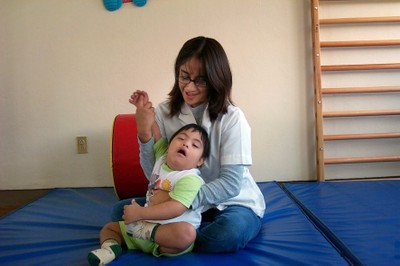Child Sponsorship background from Tuxtla Gutiérrez, Mexico
 SOS Children's Village Tuxtla Gutiérrez
SOS Children's Village Tuxtla Gutiérrez
The Federal State of Chiapas is one of Mexico's least developed regions. More than 50 per cent of its inhabitants live below subsistence level. There was no facility there providing therapy, treatment, activities and education for children with special needs.
Therefore, the child welfare authorities of Chiapas and SOS Children’s Villages decided to build an SOS Children’s Village, an SOS Social Centre and an SOS School for children with special needs in Tuxtla Gutiérrez, the capital of Chiapas.
The government of Chiapas donated a piece of land in a well integrated district of Tuxtla Gutiérrez. Construction of SOS Children's Village was finished in November 2003. The same month, the first families moved into their new homes.
SOS Children's Village Tuxtla Gutiérrez offers a home to physically or mentally challenged children. It consists of a number of family houses, the village director's house, an administration and service area and an SOS School for children with special needs, including five class rooms and a library.
Other SOS Projects in Tuxtla Gutiérrez
The SOS Social Centre comprises a medical treatment centre, four training workshops, eight houses for outpatient treatment and the SOS Therapy Centre for children with special needs. The therapy centre offers different types of occupational, speech-, hydro-and physiotherapy.
The SOS Social Centre has capacity for residents of the Village as well as neighbouring children. The outpatient children generally stay at the SOS Children's Village for three weeks, and then they return to living with their families in other parts of Chiapas. In the training workshops, the children's practical abilities are developed through activities such as pottery, painting and gardening, according to their special needs.
Background to Tuxtla Gutiérrez
Tuxtla Gutiérrez is a municipality and the capital city of the state of Chiapas, Mexico. It is the seat of the local public administration, the local authorities, and of the federal government delegations in the state. It covers more than 40% of the municipal territory, and continues to grow.

 Return to Schools Wikipedia Home page…
Return to Schools Wikipedia Home page…
